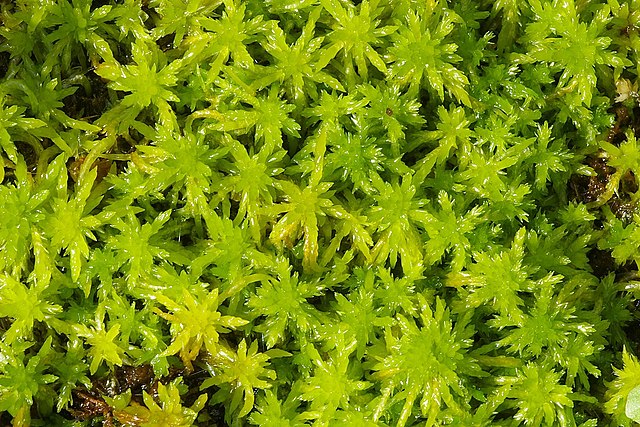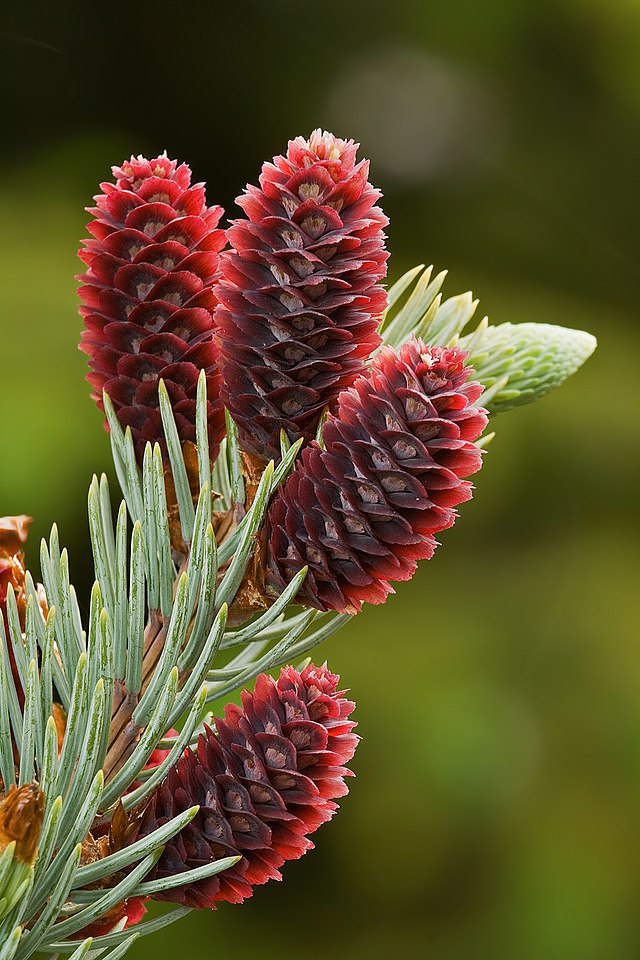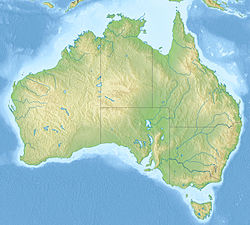Top Qs
Timeline
Chat
Perspective
Evergreen Formation
Remove ads
The Evergreen Formation is a Pliensbachian to Toarcian geologic formation of the Surat Basin in New South Wales and Queensland, eastern Australia. Traditionally it has been considered to be a unit whose age has been calculated in between the Pliensbachian and Toarcian stages of the Early Jurassic, with some layers suggested to reach the Aalenian stage of the Middle Jurassic, yet modern data has found that an Early Pliensbachian to Latest Toarcian age is more possible.[4][5][6] The formation was named due to the "Evergreen Shales", defined with a lower unit, the Boxvale Sandstone, and a partially coeval, partially younger upper unit, the Westgrove Ironstone Member.[7] This unit overlies the Hettangian-Sinemurian Precipice Sandstone, as well several informal units such as the Nogo Beds, and Narayen beds, as well Torsdale Volcanics.[7] This unit likely was deposited in a massive lacustrine body with possible marine environment influences.[8]
Quick facts Type, Unit of ...
| Evergreen Formation | |
|---|---|
| Stratigraphic range: Lower Pliensbachian- Late Toarcian ~186.74–175.94 Ma [1] | |
| Type | Geological formation |
| Unit of | Bundamba Group |
| Sub-units | Boxvale Sandstone & Westgrove Ironstone Members |
| Underlies | Hutton Sandstone |
| Overlies | Precipice Sandstone |
| Thickness | Up to 255 m (837 ft) |
| Lithology | |
| Primary | Sandstone, siltstone, mudstone |
| Other | Coal, ironstone |
| Location | |
| Coordinates | 25.8°S 150.3°E / -25.8; 150.3 |
| Approximate paleocoordinates | 61.7°S 90.0°E / -61.7; 90.0 |
| Region | New South Wales, Queensland |
| Country | Australia |
| Extent | |
| Type section | |
| Named for | "Evergreen Shales" |
| Named by | Hogetoorn[3] |
Close
Remove ads
Fossil content
Summarize
Perspective
Indeterminate Unionoid bivalves are know from the Kolane Station.[9]
Ichnofossils
More information Genus, Species ...
| Genus | Species | Type | Location | Material | Origin | Images |
|---|---|---|---|---|---|---|
|
Fodinichnia |
|
Radiating bulb-like swelling burrows |
Annelid worm, vermiform organism |
||
|
|
trails |
Gastropods |
|||
|
Cylindrichnus[10] |
|
|
Long, subconical, weakly curved burrows |
|
||
|
Domichnia |
U-shaped burrows |
|
 | ||
|
Fodinichnia |
Simple, unbranched, horizontal cylinder traces |
 | |||
|
Lockeia[10] |
|
|
Dwelling traces |
|
 | |
|
Naktodemasis[10] |
|
Fodinichnia |
Straight to sinuous, unlined and unbranched burrows |
|
||
|
Palaeophycus[10] |
|
Domichnia |
Straight or gently curved tubular burrows. |
|
 | |
|
Fodinichnia |
Irregularly meandering burrows |
Vermiform Animals |
|||
|
Pascichnia |
Cylindrical or elliptical curved/tortuous trace fossils |
|
 | ||
|
|
Symmetrical trail or burrow |
Gastropods |
 | ||
|
Domichnia |
Cylindrical strands with branches |
|
|||
|
Siphonichnus[10] |
|
Domichnia |
Cylindrical strands with branches |
|
||
|
Fodinichnia |
Unlined meniscate burrows |
|
|||
|
Tubular Fodinichnia |
Tubular Burrows |
|
 | ||
|
Fodinichnia |
Vertical to oblique, unbranched or branched, elongated to arcuate spreite burrow |
|
 | ||
Close
Diplopoda
More information Genus, Species ...
| Genus | Species | Location | Stratigraphic position | Material | Notes | Images |
|---|---|---|---|---|---|---|
|
Decorotergum[11] |
|
|
Westgrove Ironstone Member |
Incomplete specimens: QMF12294, QMF12295 and one small fragment of a third specimen, QMF12296 |
A millipede whose affinities are controversial. It may be an Oniscomorpha of the order Amynilyspedida family Amynilyspedidae or a member of the order Polydesmida |
 |
Close
Vertebrata
More information Genus, Species ...
| Genus | Species | Location | Stratigraphic position | Material | Notes | Images |
|---|---|---|---|---|---|---|
|
Indeterminate |
|
Westgrove Ironstone Member |
|
A Freshwater Plesiosaur with affinities with Pliosauridae and Neoplesiosauria |
||
|
S. kehli |
|
Westgrove Ironstone Member |
|
A gigantic chigutisaurid temnospondyl, representing a relictual genus isolated in the Australian Ecoregion, as well one of the largest Mesozoic amphibians |
 | |
Close
Phytoplankton
More information Genus, Species ...
| Genus | Species | Stratigraphic position | Material | Notes | Images |
|---|---|---|---|---|---|
|
Chomotriletes[14] |
|
|
|
Affinities with the family Zygnemataceae. A genus derived from freshwater filamentous or unicellular, uniseriate (unbranched) green algae. |
|
Close
Bryophyta
More information Genus, Species ...
| Genus | Species | Stratigraphic position | Material | Notes | Images |
|---|---|---|---|---|---|
|
Anapiculatisporites[14] |
|
|
|
Incertae sedis; affinities with Bryophyta. |
|
|
Cingutriletes[14] |
|
|
|
Incertae sedis; affinities with Bryophyta. |
|
|
Distalanulisporites[14] |
|
|
|
Affinities with the family Sphagnaceae in the Sphagnopsida. |
|
|
Foraminisporis[1] |
|
|
|
Affinities with the family Notothyladaceae in the Anthocerotopsida. |
|
|
|
|
Incertae sedis; affinities with Bryophyta. This spore is found in Jurassic sediments associated with the polar regions. |
||
|
|
|
Affinities with the family Notothyladaceae in the Anthocerotopsida. Hornwort spores. |
 | |
|
Rogalskaisporites[14] |
|
|
|
Affinities with the family Sphagnaceae in the Sphagnopsida. |
|
|
|
|
Affinities with the family Sphagnaceae in the Sphagnopsida. "Peat moss" spores, related to genera such as Sphagnum that can store large amounts of water. |
 | |
|
|
|
Affinities with the family Encalyptaceae in the Bryopsida. Branching moss spores, indicating high water-depleting environments. |
 | |
Close
Lycophyta
More information Genus, Species ...
| Genus | Species | Stratigraphic position | Material | Notes | Images |
|---|---|---|---|---|---|
|
Antulsporites[14] |
|
|
|
Affinities with the Selaginellaceae in the Lycopsida. |
|
|
Apiculatisporis[14] |
|
|
|
Incertae sedis; affinities with Lycopodiopsida |
|
|
|
|
Affinities with the Selaginellaceae in the Lycopsida. Herbaceous lycophyte flora, similar to ferns, found in humid settings. This family of spores are also the most diverse in the formation. |
 | |
|
|
|
Affinities with the family Lycopodiaceae in the Lycopodiopsida. Lycopod spores, related to herbaceous to arbustive flora common in humid environments. |
||
| Dictyotosporites[16] |
|
|
|
Incertae sedis; affinities with Lycopodiopsida. | |
|
|
|
Affinities with the family Lycopodiaceae in the Lycopodiopsida. Lycopod spores, related to herbaceous to arbustive flora common in humid environments. |
 | |
|
Neoraistrickia[14] |
|
|
|
Affinities with the Selaginellaceae in the Lycopsida. |
|
|
|
|
Incertae sedis; affinities with Lycopodiopsida. |
||
|
Retitriletes[14] |
|
|
|
Affinities with the family Lycopodiaceae in the Lycopodiopsida. |
|
|
Lycopodiumsporites[14] |
|
|
|
Affinities with the family Lycopodiaceae in the Lycopodiopsida. Lycopod spores, related to herbaceous to arbustive flora common in humid environments. |
|
|
Uvaesporites[14] |
|
|
|
Affinities with the Selaginellaceae in the Lycopsida. |
|
Close
Pteridophyta
More information Genus, Species ...
| Genus | Species | Stratigraphic position | Material | Notes | Images |
|---|---|---|---|---|---|
|
|
|
Affinities with the genus Saccoloma, type representative of the family Saccolomataceae. This fern spore resembles those of the living genus Saccoloma, being probably from a pantropical genus found in wet, shaded forest areas. |
 | |
|
|
|
Affinities with the family Osmundaceae in the Polypodiopsida. Near fluvial current ferns, related to the modern Osmunda regalis. |
 | |
|
Biretisporites[14] |
|
|
|
Affinities with the Marattiaceae in the Polypodiopsida. Fern spores from low herbaceous flora. |
|
|
Cingulatisporites[14] |
|
|
|
Incertae sedis; affinities with the Pteridophyta |
|
|
Clavatisporites[14] |
|
|
|
Incertae sedis; affinities with the Pteridophyta |
|
|
Cyathidites[14] |
|
|
|
Affinities with the family Cyatheaceae in the Cyatheales. Arboreal fern spores. |
 |
|
|
|
Affinities with the family Matoniaceae in the Gleicheniales. |
||
|
Duplexisporites[14] |
|
|
|
Incertae sedis; affinities with the Pteridophyta |
|
|
Foveosporites[14] |
|
|
|
Incertae sedis; affinities with the Pteridophyta |
|
|
|
|
Affinities with the Gleicheniales in the Polypodiopsida. Fern spores from low herbaceous flora. |
 | |
|
Granulatisporites[14] |
|
|
|
Affinities with the Pteridaceae in the Polypodiopsida. Forest ferns from humid ground locations. |
 |
|
Heliosporites[14] |
|
|
|
Incertae sedis; affinities with the Pteridophyta |
|
|
|
|
Incertae sedis; affinities with the Pteridophyta |
||
|
|
|
Incertae sedis; affinities with the Pteridophyta |
||
|
|
|
Affinities with the family Dennstaedtiaceae in the Polypodiales. Forest fern spores. |
 | |
|
|
|
Affinities with the family Matoniaceae in the Gleicheniales. |
||
|
Osmundacidites[14] |
|
|
|
Affinities with the family Osmundaceae in the Polypodiopsida. Near fluvial current ferns, related to the modern Osmunda regalis. |
|
|
Peroaletes[14] |
|
|
|
Incertae sedis; affinities with the Pteridophyta |
|
|
Perotrilites[14] |
|
|
|
Incertae sedis; affinities with the Pteridophyta |
|
|
Polypodiisporites[14] |
|
|
|
Affinities with the family Dennstaedtiaceae in the Polypodiales. Forest fern spores. |
|
|
Rugulatisporites[14] |
|
|
|
Affinities with the family Osmundaceae in the Polypodiopsida. Near fluvial current ferns, related to the modern Osmunda regalis. |
|
Close
Peltaspermales
More information Genus, Species ...
| Genus | Species | Stratigraphic position | Material | Notes | Images |
|---|---|---|---|---|---|
|
|
|
Affinities with the families Peltaspermaceae, Corystospermaceae or Umkomasiaceae in the Peltaspermales. Pollen of uncertain provenance that can be derived from any of the members of the Peltaspermales. The lack of distinctive characters and poor conservation make this pollen difficult to classify. Arboreal to arbustive seed ferns. |
||
|
Kekryphalospora[1] |
|
|
|
Affinities with the families Peltaspermaceae, Corystospermaceae or Umkomasiaceae in the Peltaspermales. Extremely abundant |
|
|
|
|
From the family Caytoniaceae in the Caytoniales. Caytoniaceae are a complex group of Mesozoic fossil floras that may be related to both Peltaspermales and Ginkgoaceae. |
||
Close
Cycadophyta
More information Genus, Species ...
| Genus | Species | Stratigraphic position | Material | Notes | Images |
|---|---|---|---|---|---|
|
Cycadopites[14] |
|
|
|
Affinities with the family Cycadaceae in the Cycadales or with Cycadaceae and Bennettitaceae. It has been found associated with the Bennetite pollen cone Bennettistemon |
 |
Close
Conifers
More information Genus, Species ...
| Genus | Species | Stratigraphic position | Material | Notes | Images |
|---|---|---|---|---|---|
|
|
|
Affinities with the family Araucariaceae in the Pinales. Conifer pollen from medium to large arboreal plants. |
 | |
|
Callialasporites[10] |
|
|
|
Affinities with the family Araucariaceae in the Pinales. Conifer pollen from medium to large arboreal plants. |
|
|
|
|
Affinities with the Hirmeriellaceae in the Pinopsida. |
||
|
|
|
 | ||
|
|
|
Affinities with the family Podocarpaceae inside Coniferae. |
||
|
|
|
Affinities with the family Cupressaceae in the Pinopsida. Pollen that resembles that of extant genera such as the genus Actinostrobus and Austrocedrus, probably derived from dry environments. |
 | |
|
Podocarpidites[14] |
|
|
|
Affinities with the family Podocarpaceae. Pollen from diverse types of Podocarpaceous conifers, that include morphotypes similar to the low arbustive Microcachrys and the medium arbustive Lepidothamnus, likely linked with Upland settings |
 |
|
|
|
Affinities with the family Podocarpaceae. |
||
|
Trisaccites[14] |
|
|
|
Affinities with the family Podocarpaceae. |
|
|
|
|
Affinities with the family Pinaceae in the Pinopsida. Conifer pollen from medium to large arboreal plants. |
 | |
Close
Remove ads
References
Further reading
Wikiwand - on
Seamless Wikipedia browsing. On steroids.
Remove ads
Remove ads
